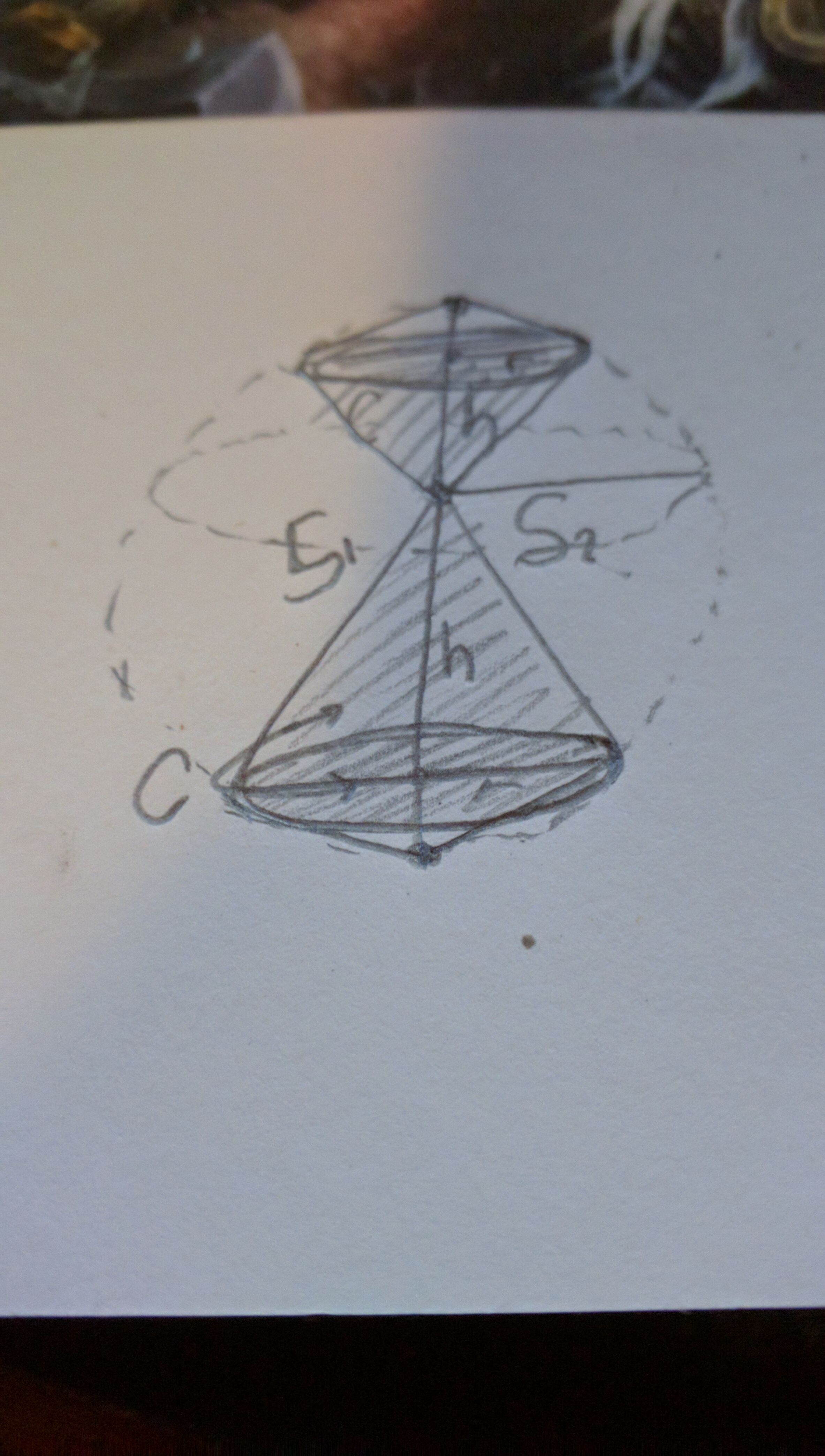
Surround the circle of coagulant created by the metal rod(s) circumference in a solid, metal coat, and then remove the coagulant, to get a toroidal shell. The coagulant can be extracted by drilling a hole in the metal, or leaving a hole when the sheathe is cast. Now, apply many rods of the same length and thickness as the original to the edge of the toroidal shell at a 60 degree angle all along the circumference, to define a cone in space. The cone will include a single point where all of the rods meet, a quadrilateral/trilateral cusp plane composed of the combined surface of the rods, and the previously-constructed toroidal shell. Coagulate and coat, then remove coagulant.
You can now use this cone to build a spherical shell by extruding coagulant from the circular rim of the cone’s circular metal base, and rotating the rim to all possible configurations within the shape of a sphere without moving the point, or changing the size of, the cone. Where the circumference of the cone’s circular base passed through, you will have a spherical shell.
S.tupid,”
engineers claim, so as to avoid undue complication.
“Quality AND Performance,” is mandated by computer scientists, who work with ideals and perfect algorithmic forms; so maybe, try using printing-bit objects polygons with more sides, such as cubes, dodecahedrons, and so on, instead of cones. More math makes for more work initially, longer printing times, and more massive constructs, but the spherical shell will be more perfectly spherical the more sides there are on the polygonal bit used to print a sphere.
Applicable to 4-dimentional “light cones” from Stephen Hawking‘s “A Brief History of Time”. I hypothesize interaction spheres, which the light cones are a lower-dimentional representation of. I am also seeing projections in post-drawing animations that are somehow being piped to my screen of things called, “Interaction Cylinders.” Interaction cylinders are an outpouring of line and ray rope maneuvering and mass reproduction calculation. They aren’t ideal. A more liberal use of my skillset would advise to use something to magnetically and variably counteract the cone’s weight, so as to levitate and subsequently spin the cone.
Technologically approximate to either a magnetically levitating rim-printing top, or a “zero gravity” top. You laugh, you lose.

Leave a Reply
You must be logged in to post a comment.